Materials
Sand Finish vs. Gloss Finish
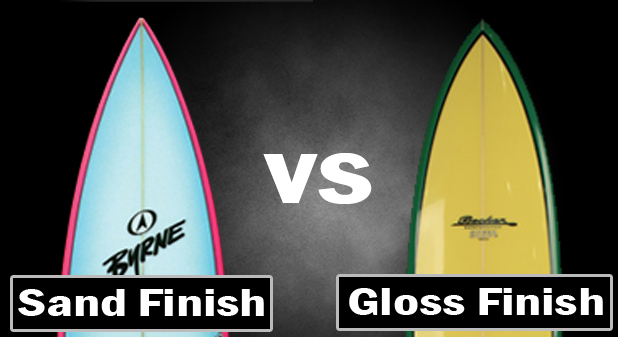
Once you and your shaper finish discussing the shape of your next board, it is a good idea to approach the subject of a sanded finish vs. gloss finish. Each have their own merits and, depending on who you’re speaking with, their faults. SurfScience outlines the facts and commonly held theories regarding these two techniques.
Process
According to George Orbelian’s book, Essential Surfing, a sand finished is achieved by carefully using 60 D grit sandpaper over the entire surface of the surfboard, then switching to 100C sandpaper. If not careful, it is easy to cut into the fiberglass cloth layer beneath the laminating resin.
Orbelian continues to explain that a gloss finished board requires a final finish coat after the sanding. The purpose is to cover any scratches left by the 100 C sandpaper. The finishing resin dries with a semi-gloss finish. Bringing the surfboard’s surface to a high gloss finish requires wet sanding and polishing with a power buffer or by hand.
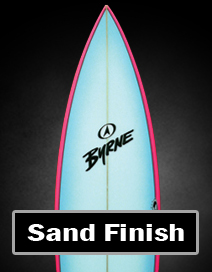
Sanded Finish
Leaving the surfboard with this sanded finish produces a lighter end product because no finish coat is added. In addition, a sand finish is less expensive to produce and, in some circles, thought to produce a faster surfboard. The downside to this process is the fact that a sanded finish is more porous, which can lead to water damage and deterioration. As a result, these surfboards are considered less durable than boards with a gloss finish. The sand finish also collects a lot of debris and particles in the water, making the surfboard difficult to clean.
Many professional surfers choose to ride sand finished boards to avoid the added weight of a gloss coat. Because pros push their equipment to extreme levels, they often move on to a new surfboard before water absorption affects performance.
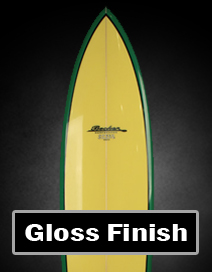
Gloss Finish
A gloss finish will add weight and about $75 to a surfboard due to the coat of finishing resin and extra labor. It’s uncertain exactly how much weight is added, but it’s thought to be between one lb. and 1 ½ pounds. In exchange for the increased weight a surfer receives a better sealed board with no pin holes or sandthroughs in the resin. The seal will limit water absorption, making the board more durable while also keeping its liveliness for a longer period of time. Another great benefit is the beauty of a glossed finish; it will often produce a surfboard truly pleasing to the eyes. Finally, these boards are also very easy to clean.
As you conduct your own research on sand finished vs. gloss finished surfboards, you may ask your shaper which he recommends for the shape he is making for you. One theory suggests a sand finish is best for displacement hulls while a gloss finish is best of planing hulls. As is usually the case, this is a great topic you can use to engage your local shaper and help him produce a great surfboard to enhance your surfing.
Summary
Sanded Finish
Weight: 1.5 pounds lighter
Cost: $75 cheaper
Speed: Many believe a sand finished board is faster while some believe it is by a very small margin, if any
Durability: More porous so water damage is more likely, shortening the surfboard's life span
Aesthetics: Dull look
Glossed Finish
Weight: 1.5 pounds heavier, but most have difficulty feeling the difference
Cost: On average the extra materials and labor will cost $75 more
Speed: One theory suggests a gloss finish is best for a planing hull, which most boards have
Durability: Sealing off the tiny pinholes left by sanding the board will limit water absorption and increase the lifespan
Aesthetics: Very pleasing to the eye

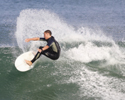

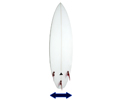


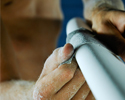
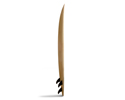
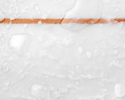
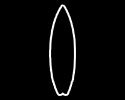



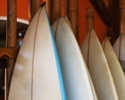
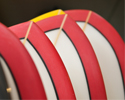
1 Comment